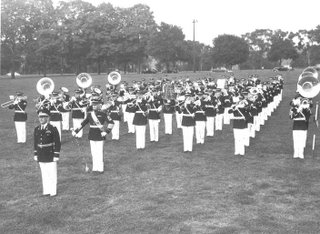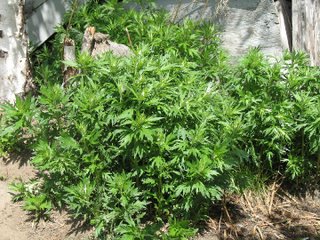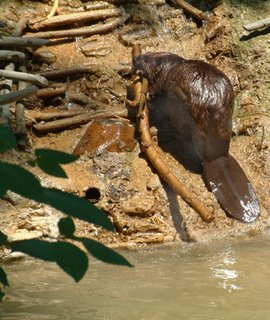Yupik Eskimo Home Remedies

The delivery of health care in southwest Alaska is a daily collision between two cultures. Western medicine/culture is a marching band playing John Phillip Souza; we charge right into the patient’s life with lots of questions, tests, exam maneuvers, pokes-and-prods, needles and medicines, and ranks of health care workers marching in formation to the drum major/physician’s baton. The attitude of the music is that we know what is best, we’ll solve the problem, and the patient must simply cooperate and do what we tell him. Many times that is exactly what happens, and miracles are achieved.
Yupik Eskimo culture and orientation toward healing, on the other hand, is a string quartet playing Mozart. Delicate, slow, intricate, often soft, sometimes haunting; the attitude is carried by a question mark, not an exclamation point. Both approaches have something of value to offer.
The Yupik people survived on this land, in this very harsh climate, for thousands of years before Caucasians arrived bringing Western culture to “improve” their lives, and they did quite well. Their healers were well versed in the use of plant and animal products to alleviate pain and speed the body’s natural healing ability, and much of that knowledge continues today. Most villages have an elder or two whose parent or grandparent was a healer and who remembers some of the “old ways.”
Village health aides are the bridge between Western medicine and Native healing. They are trained by the hospital to gather patient data according to Western guidelines, but their cultural foundation includes a somewhat mystical belief structure about the functioning of the human body in health and illness. Health aides often walk a fine line in honoring both cultures.
One question health aides routinely ask patients is “What home remedies have you tried?” The health aide may not be surprised by the answer, but I sometimes am.

Herbal teas and poltices are common home remedies, and the prince of plants on the tundra is called chaithluk or stinkweed. Boiling the leaves in water and drinking the tea is soothing for a cold and believed to have some anti-viral properties (studies are lacking). It even tastes reasonably good, especially with a little honey. The boiled leaves are then used as a poltice on the chest to reduce congestion and cough. Fresh, raw leaves are also used. Sometimes the leaves are placed directly on the skin, and sometimes they are chopped and mixed into that all-purpose vehicle, Crisco (possibly the single greatest contribution of Western culture to the Yupik people). If chaithluk is out of season and none has been dried for winter use, then Crisco alone is often used. Before there was Crisco, the people used rendered fat from various animals, most commonly seal, walrus, beaver or caribou.
The leaves of chaithluk are also used as an astringent for cleaning wounds. For patients with wheezing and cough, the dried plant is burned on hot coals to produce a smoke for the patient to inhale; the use of nebulized albuterol has pretty much replaced this practice, but elders say that it did help some. And the whole plant is often brought fresh into the steambath to use as a skin stimulant and invigorator. After you work up a good sweat, you smack yourself along the the arms, legs, and back with a small bouquet of the long leafy stems. It actually feels quite nice, reduces the sting of the steam, and creates a nice smell in the steambath.
Several other plants are frequently used for medicinal purposes. There is a tundra variety of chamomile which produces a small hard yellow “berry” which is chewed raw or boiled and drunk as a tea for stomachache or mouth sores. Stinging nettle leaves are boiled and eaten, and the tea drunk, for acne problems and pimples. And probably the best-known remedy the world over, the leaves and bark of the willow tree are chewed for their pain and fever relieving properties. The bark is said to contain an elemental form of salicylic acid, from which aspirin is made.
Infections resulting from minor skin insults are common among the Yupik, and can quickly progress to ascending lymphangitis. Once a red streak shows up, many people tie a red string or strip of cloth around the extremity (not tightly) to prevent the streak from getting any longer. They strongly believe that it prevents the red streak from coming any closer to the heart.

The most stunning example of a home remedy that I have yet encountered was related to me by a retired health aide from a Yukon River village. She had a tooth with a deep cavity in it and was delaying a trip to Dental Clinic until she had some time off. Until then, she was achieving excellent anesthesia by packing the hole with a hard brown chunky powder.
“Here,” she said. “Put some between your cheek and gum and feel how numb it gets.” I’m game for most things, and had just watched her pack the tooth with the same stuff, so I tried it. It worked like a charm; in less than a minute that spot in my mouth was noticeably numb. She said it would work for several hours if I kept it in there.
I took the piece out of my mouth and looked at. Dark brown, it looked like a small chunk of wood and had no odor.
“OK, I give. What is it?”
Pausing for effect, she grinned slyly at me. “Dried beaver balls!”
I think I might have stopped breathing for about ten seconds. She was kidding, wasn’t she? Nope. She was dead serious.
“You cut the testicles off a dead beaver and hang them from the ceiling over the wood stove. They dry out in a couple weeks, then you chop ‘em into little pieces and store ‘em in a dry place. They’ll last for years if you keep ‘em dry.” I can’t help but wonder how this got figured out in the first place; it is right up there with the first person to ever eat an oyster. Talk about brave.
I was trying hard not to look stunned. She knew better than to tell me what it was before I put it in my mouth! But I was glad I tried it; it certainly works. The village clinics keep clove oil in stock for the same application; it also works, with less culture-shock to us Westerners.
The practice of medicine up here is an ongoing education. I learn new things nearly every day. I am honored by the trust that people place in me, and their willingness to allow me into their lives at such vulnerable times as illness can create. The culture which has provided tools for survival in one of the harshest of earth’s climates deserves—and receives—my ultimate respect.
Marching band photo from U.S. Military Academy archives, 1950.
Beaver photo from Smithsonian Institute, National Zoo.
Labels: Bush Medicine




15 Comments:
Alrighty then!
*grimace*
eeks.
Back here in the enlightened Northeast U.S., there's plenty of use of culturally-coded remedies, homeopathy, witchcraft, and you-name-it.
All of it shares the common feature of being essentially harmless.
I know better than to get into an argument with folks about it.
If it ain't hurting the child, I let it go.
best,
Flea
Some of the treatments I knew about, but the dried beaver testicles...I'll take oil of cloves, thank you. Maggie Rosethorn (aka Dawn)
I love herbal remedies!! Alot of docs don't give it the respect it deserves.. i am so glad that you do!!! This is new info for me thanks for sharing!!! You should really write a book with all of this I think it would be great!!! the meshing of different coulters and medicines and how they work togther it would be fantastic!!!
This belongs in your best of TundraPA. Start a poll and we will all get to vote. You have set the bar a whole lot higher. I am amazed that beaver balls don't taste because they are the essential ingredient in musk AKA perfume. I am going to use this for teaching. The Sousa metaphor is so appropriate. Am waiting for episodes 2-10, scurvy grass and shamanism. Harmless is not the word I would use, more like healing. Would the allopathic medicine were harmless.
Im fascinated. Thanks for sharing the interesting info, but for sharing your respect for this culture and people group as well.
heh heh heh
Does the beaver need to consent?
(great stuff - keep it coming. I find this fascinating!!!)
Umm... just how/why would beaver balls contain an anaesthetic? This seems worthy of further investigation by biologists.
wow, amazing! thank you for this post!
Realy very informative articles posted by you regarding home remedies. Keep it up.
Have a nice day !!
Bye
its allright we can do better than this but this is easy to fallow
Hello! I live and work in Akiak Village on the Kuskokwim river 40 miles upriver from Bethel. The people here call that plant guhnanachok (my phonetic version of the pronunciation). I chewed some when I started getting sick during this last round of colds and flus. All symptoms went away for a few days. I finally came down with the flu or a bad cold 2 days ago because I wore myself out by hiking and exploring too much. I've got a pot of the tea from this herb cooling on my stove now. I plan to go out and collect some plants for drying this afternoon. Peppermint grows in places along the river too. A tera made from the peppermint is used for stomach aches. Helena Williams, an elder in Akiak, makes a syrup of the guhnanachok with the bark of the willow for a cold remedy. Shelly Sinclair in Akiak, Alaska.
Shelly, thanks for commenting. I am delighted when local folks are reading the blog. I communicate with the health aides in Akiak weekly. I know Helena, and especially her son Mike and grandson Mike Jr., both outstanding mushers. If you search the blog (window at the top left) for "Mike Williams" you'll find at least one post I've written about him.
Hope your cold is better soon!
Mike Sr. just got back from Washington DC. He was talking to the legislature about global warming and the melting of the polar ice cap. I need to have him come in and talk to my high school science students about it. Mike Jr. has a cold. They gave a sled dog puppy to my friend Rachelle. She teaches 5th and 6th grade at Arlicaq School in Akiak. I think I have Swine Flu. It went to my lungs really fast. I slept from 9 pm last night until 11:30 am today. That's not like me. I', an early riser. Elder Moly napoka showed me a bush that looks like willow but, its different. She makes a tea of it and gives it to her grandkids once inthe morning and once at night. she likes it better than the guhnanachok. She says the guhnnachok is too strong. she also collects the wild chamomile and says its good for pneumonia. One of our high school students, Leann Jackson, went to Bethel yesterday with pneumonia. She is a 12th grade student with a scholarship to UAA. I hope she's ok. Thanks for replying to me. Shelly Sinclair in Akiak, Alaska.
I'm a big supporter of natural remedies and so much of this can be learned by simply sitting and sharing space with tribal elders from the indigenous communities. Here in Australia our locals have so much bush food and local knowledge that is only slowly coming into mainstream consumption. Yes, we have to stop and listen and be open to hearing less Western based processes. Great share - Beaver's and all!
Post a Comment
<< Home